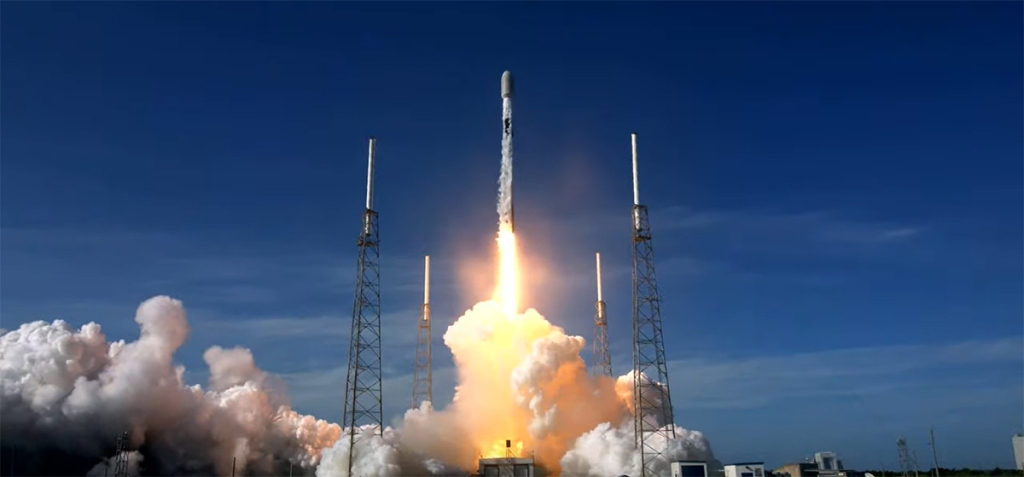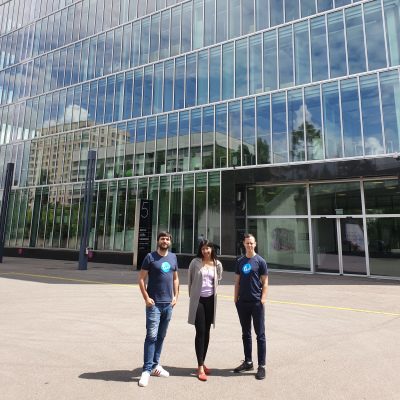SpaceX is carrying a fresh haul of supplies to the International Space Station this weekend after bad weather at the launch site forced the company to wave off its first attempt.
The mission took off from NASA’s Kennedy Space Center in Florida around 2:20 p.m. ET Saturday. The original liftoff date had been Tuesday.
The bounty of supplies on board includes a pair of new solar arrays for the space station, dwarf tomato seeds and a range of science experiments. There will also be treats for the astronauts on the space station, like ice cream and Thanksgiving fare like spicy green beans, cranberry apple desserts, pumpkin pie and candy corn.
The solar arrays will be installed outside the floating laboratory during spacewalks scheduled for November 29 and December 3. They will give the space station a power boost.
SpaceX has launched more than two dozen resupply missions to the space station over the past decade as part of a multibillion-dollar deal with NASA. This launch comes amid SpaceX’s busiest year to date, with more than 50 operations so far, including two astronaut missions.
The cargo on board includes a number of health-related items, such as the Moon Microscope kit. The portable handheld microscope will allow astronauts to collect and send images of blood samples to flight surgeons on the ground for diagnostics and treatment.
Tomatoes in space
Nutrients are a key component of maintaining good health in space. But fresh produce is in short supply on the space station compared with the prepackaged meals astronauts eat during their six-month stays in low-Earth orbit.
“It is fairly important to our exploration goals at NASA to be able to sustain the crew with not only nutrition but also to look at various types of plants as sources for nutrients that we would be hard-pressed to sustain on the long trips between distant destinations like Mars and so forth,” said Kirt Costello, chief scientist at NASA’s International Space Station Program and a deputy manager of the ISS Research Integration Office.
Astronauts have grown and tasted different types of lettuce, radishes and chiles on the International Space Station. Now, the crew members can add some dwarf tomatoes — specifically, Red Robin tomatoes — to their list of space-grown salad ingredients.
The experiment is part of an effort to provide continuous fresh food production in space.
The dwarf tomato seeds will be grown under two different light treatments to measure the impact on the number of tomatoes that can be harvested as well as the plants’ nutritional value and taste. Red Robin tomatoes will also be grown on Earth as a control experiment. The two crops will be compared to measure the effects of a zero-gravity environment on tomato growth.
The space tomatoes will be grown inside small bags called plant pillows installed in the Vegetable Production System, known as the Veggie growth chamber, on the space station. The astronauts will frequently water and nurture the plants.
“Tomatoes will be a new adventure for us on the veggie team, trying to figure out how to keep these thirsty plants well watered without overwatering,” said Gioia Massa, NASA’s space crop production scientist and principal investigator for the tomato study.
The tomatoes will be ready for their first taste test in the spring.
The crew is expecting tomato harvests 90, 97 and 104 days after the plants begin to grow. During taste tests, the crew will rate the flavor, aroma, juiciness and texture of the tomatoes grown using the different light treatments. Half of each tomato harvest will be frozen and returned to Earth for analysis.
Growing plants on the space station not only provides the opportunity for fresh food and creative taco nights, it can also boost the mood of the crew during their long spaceflight.
Surveys will track astronauts’ moods as they care for and interact with the plants to see how nurturing the seedlings enhances the crew’s experience amid the isolation of the space station.
The hardware is still in development for larger crop production on the space station and eventually other planets, but scientists are already planning what plants might grow best on the moon and Mars. Earlier this year, a team successfully grew plants in lunar soil that included samples collected during the Apollo missions.
“Tomatoes are going to be a great crop for the moon,” Massa said. “They’re very nutritious, very delicious, and we think the astronauts will be really excited to grow them there.”
The-CNN-Wire & © 2022 Cable News Network, Inc., a Warner Bros. Discovery Company. All rights reserved.
& © 2022 Cable News Network, Inc., a Warner Bros. Discovery Company. All rights reserved.










